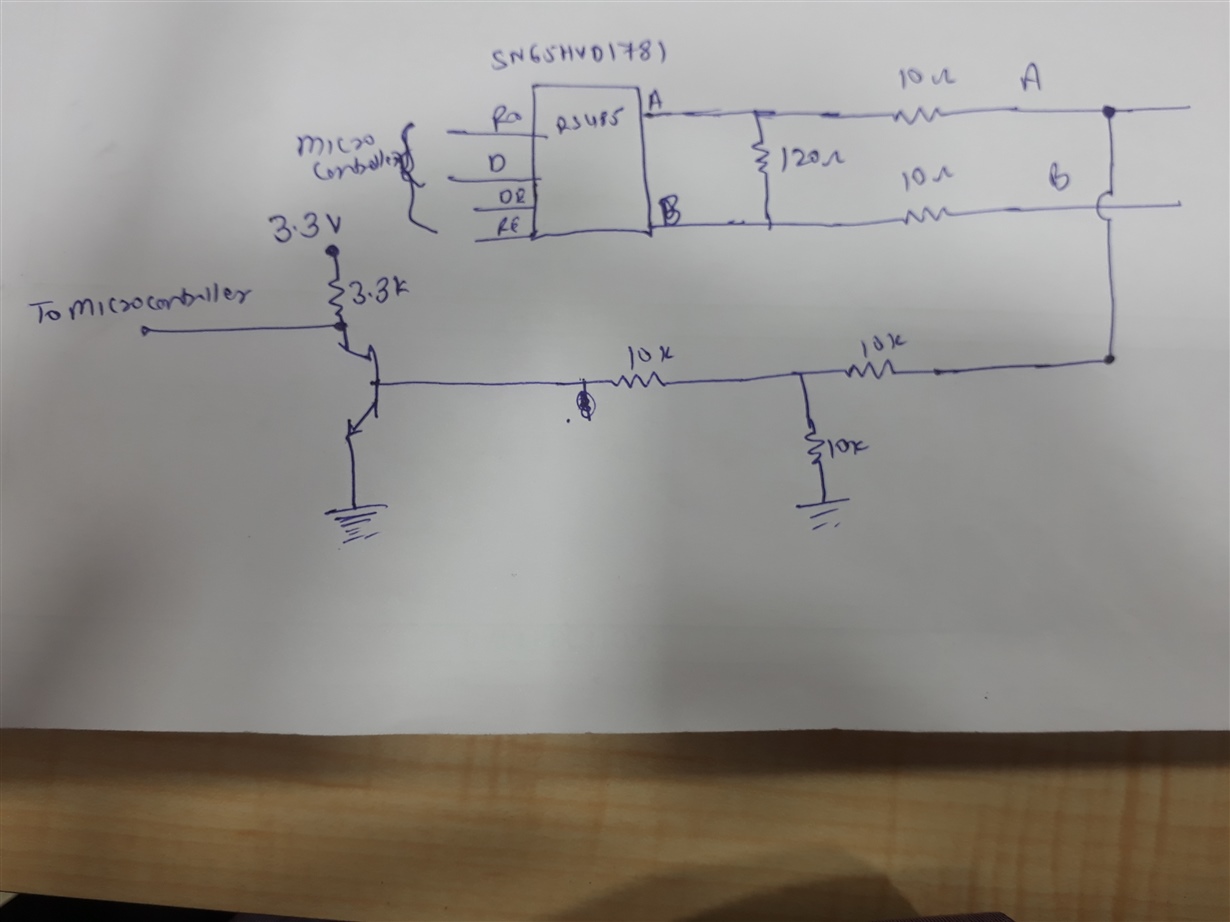Attached is the image of circuit in which I am using RS485 Transceiver "SN65HVD1781". Please note that necessary protection for ESD/EFT are not shown in image.
In my requirement there is another optional signal on line "A" of maximum amplitude of 24V (in that case there is no RS485 communication and also no other RS485 device) .
If there is RS485 communication then other signal devices are not there.
Through Channel "A" I have made separate line for the resistor divider and applied this signal to micro through transistor as shown in figure for detecting 24v signal.
Let me know what would be the impact On RS 485 signal due to added separate path when RS485 signal is present and no other signal.
Thanks


